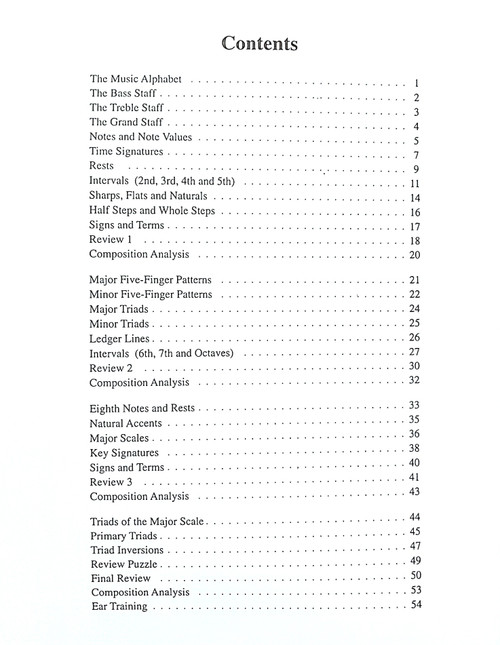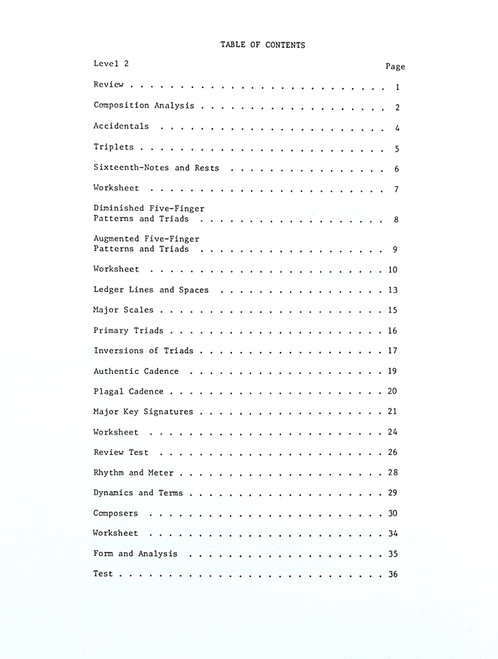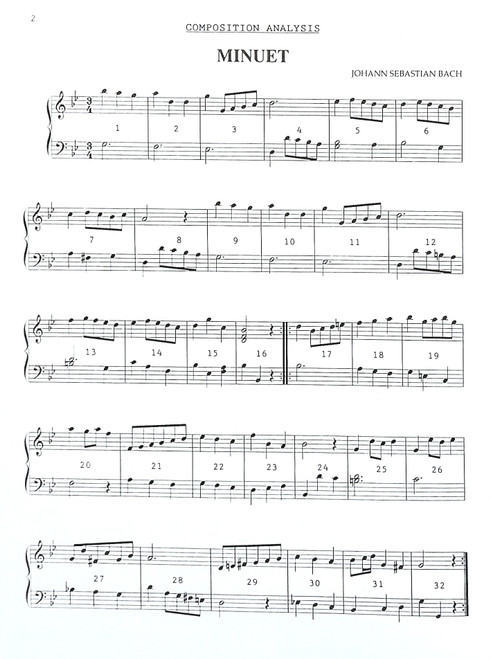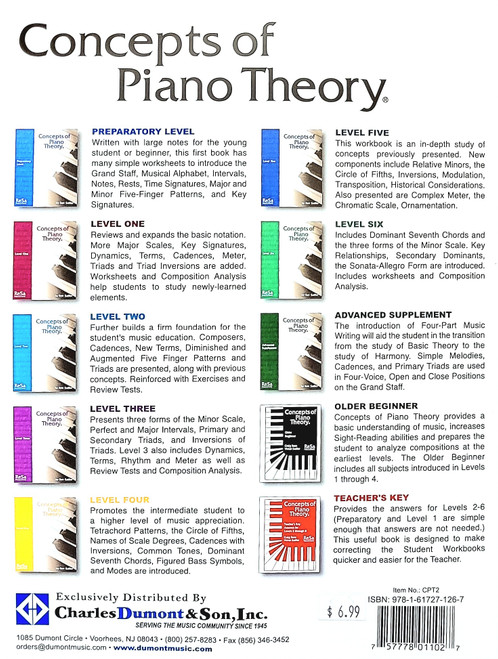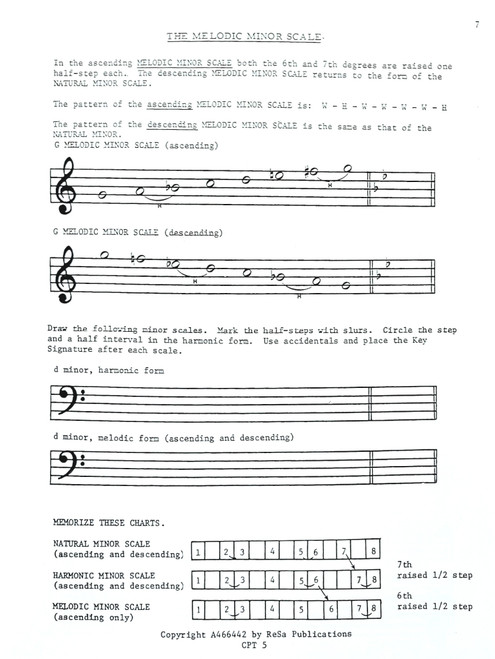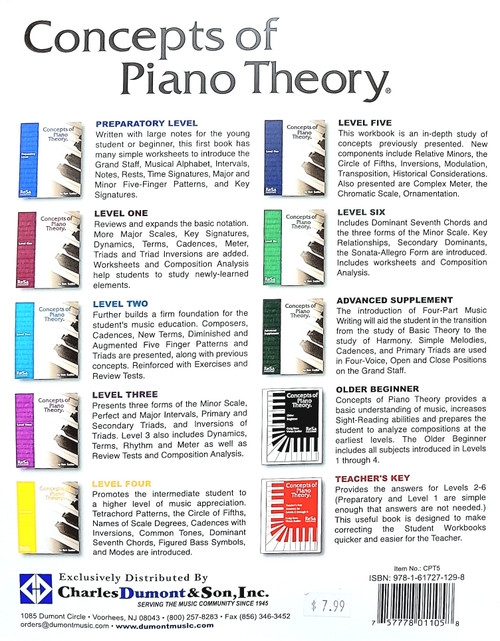The introduction of four-part music writing in the Advanced Supplement will aid the keyboard student in the transition from the study of basic theory to the study of harmony. Simple melodies, cadences, and primary triads are used in four-voice, open and close positions on the grand staff.
A section featuring the exploration of modes, textures, and compositional devices know to be characteristic of modern composers, is included with suggested materials for research.
A brief review of fundamentals precedes the introduction of new subjects. Both the old and the new are used in composition analysis throughout the supplement. Answers to the worksheets are included with each workbook.
This workbook is made from recycled paper. By using books that are made from recycled materials, you are helping reduce deforestation and recover renewable resources.
For a complete understanding of music, a thorough study of theory is necessary. Concepts of Piano Theory provides the information that should be understood by every advancing pianist.
Contents:
Key Signatures Reviewed
Intervals
Intervals of the minor scales
Fourteen Scales for One Tone
Perfect and Imperfect Cadences
Word Puzzle
Seventh Chords
Seventh Chords on the Grand Staff
Melody Writing
Composition Analysis c minor Prelude Bach
Terms, Source Materials, Composers
Modes
Motive, Phrase, Period
Sequence, Imitation, Repetition
Organ Point, Ostinato, Alberti Bass
Non-Harmonic Tones
Modulation, Doppio Movimento, Diminution, Augmentation
Composition Analysis, Solfeggietto - CPE Back
Word Mixup
Composition Analysis, Andante Cantabile - Kuhlau
Word Mix-up
Four-Part Harmony
Close and Open Positions
Worksheet
Stems in Four-Part Writing
Root Positions
Worksheet
Composition Analysis Impromptu, Schubert
Four Voices with Inversions
Figured Bass Symbols in Four Part Writing
Worksheet
Worksheet
Composition Analysis - Sonatina - Dussek
Melody Writing
English Melody
Composition Analysis, Nocturnes - Chopin
Irish Melody
Composition Analysis, Grand Valse Brillante
Composition Analysis, Allegro non troppo - Mendelssohn
Answers
BP B5.1B







